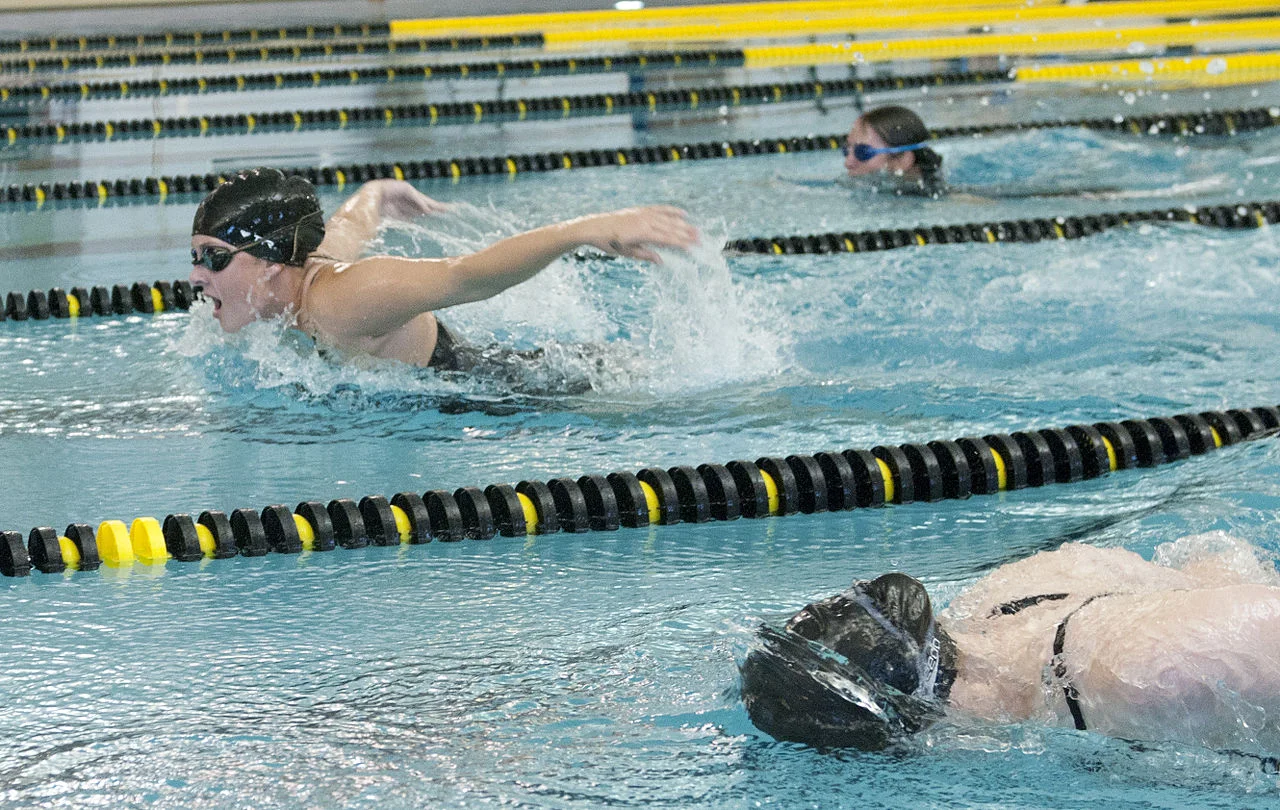To Tina Ellerbee, a former college swimmer, it was apparent when her 11-year-old daughter Allison Goldblatt began besting Tina’s collegiate times and qualified for the Junior Nationals that Allison was on track to swim on a NCAA division 1, Top-20 team.
Allison, during May of her junior year, while swimming at the Nation’s Capital Swim Club, met with the Club’s coach Pete Morgan, who has assisted hundreds of swimmers in obtaining athletic scholarships. But, the reality is, despite Allison being undeniably talented, there are no guarantees for athletic aid. In 2016 almost 8 million students played high school sports. Only 2%, around 170,000 athletes, gained a sports scholarship according to the NCAA.
The natural assumption many make is that if they’re among that elite 2%, a sports scholarship featuring full tuition, books, and room and board are readily available. That, according to Pete Morgan, is rarely the case. In the big six sports, the highest revenue generating teams on campus: football, men and women’s basketball, women’s gymnastics, women’s tennis, and women’s volleyball, scholarships can be generous. After these scholarships are doled out, however, the scholarships slow to a trickle.
On most Division I swim teams, Pete Morgan notes, are 30 male and female swimmers. Teams can give 9.9 scholarships to men and 14 to women. The bulk of the scholarship money goes to the key performers on the team. Usually this means a dozen or more swimmers get nothing.
The challenge of obtaining adequate athletic scholarships involves understanding the coach’s and team’s needs, clearly explaining how your talents might help them and then asking for a package that will allow you to afford attending. Of course, it rarely works so smoothly. , For example, Allison had injured her shoulder and been sidelined for 10 months when she interviewed with Virginia Tech. Worried that she wouldn’t continue swimming in college and that she might eventually lose her scholarship, Allison knew that her parents could afford Virginia Tech’s cost of attendance. So, she verbally committed to Vtech even though it offered her a scholarship covering only 30% of its costs.
Then, in early May, Allison swam her personal best in the 200m butterfly missing the Olympic trials by 2/10s of a second. Convinced now that her shoulder had healed, she told Vtech that she was having ‘second thoughts’. According to Rick Paine, Allison’s recruiting advisor, it’s best to keep pushing hard, ‘for the best deal you can.”
The NCAA allows swim coaches to call recruits and discuss specifics of scholarships only after July 1st of senior year. With Vtech off her list, Allison was still talking with University of Louisville, Ohio State, TCU, UNC Chapel Hill, and UCLA. Yet, when Alison asked about athletic scholarships, none of the coaches gave firm responses. It’s difficult for a 17-year-old girl to negotiate with a seasoned Division 1 swimming coach. No matter, Pete Morgan advises: “Tell them, my parents need to know how much money it will cost them to send me to your school. Then get it in writing.”
At an official visit to UCLA, Cyndi Gallagher, the head coach, began the money talk with Allison when Allison’s mother was in the bathroom. Such are the machinations of scholarship negotiations. As summer turned into fall, Allison had to juggle 3 AP and several honor’s classes and her intensive 8 weekly swimming sessions totaling 34 miles and the ongoing scholarship visits.
In the end, UCLA offered Allison a 30% scholarship on her out-of-state tuition. She took the offer not only for the money, but for something far more important: Coach Gallagher believed in her. Recently, Allison qualified in the Pac12 finals in the 500m free, 100m fly, and the 200m fly. Her potential is being realized after a long, hard search.
You may wish to read the full article in the Chronicle of Higher Education, “The Myth of the Sports Scholarship” @ https://www.chronicle.com/article/The-Myth-of-the-Sports/238453

